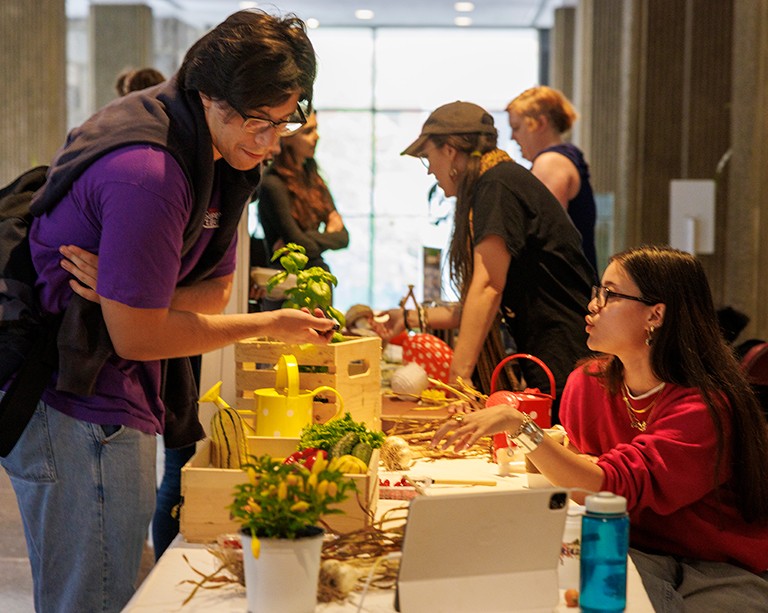Concordia design alum is co-creating speculative futures using machine learning

When Lucas LaRochelle first launched their Queering the Map digital archive four years ago, they never imagined how big it would get. But what started as five pins on a Google Map quickly grew to more than 138,000 user-generated stories of place-based queer experiences from around the globe.
Now LaRochelle (BFA 21), who recently completed their design and computations arts degree, is building on those stories using machine learning to ask new questions about queer space and queer futures.
QT.bot, their latest project, is an artificial intelligence (AI) model they are training on the textual and visual data of Queering the Map — on both the stories users share and the images scraped from their Google Maps location points. The result is a digital mind that they hope will generate speculative queer and trans futures and the places where they occur.
“Futurity as a concept feels so important because many of the conditions of the present feel unliveable, or at best, not enough,” LaRochelle says, alluding to the ongoing oppression faced by LGBTQ2IA+ people today.
“Creating a machine that can work with us to generate glimmers of what the future might look like is a survival strategy.”
‘Sitting here with you in the future’
While the success of Queering the Map kickstarted LaRochelle’s career as a designer and researcher in the areas of queer and trans digital cultures, community-based archiving and co-creative media, they are increasingly wary of the attention the archive generates.
“As the project has grown, so too has my apprehension about how it might be incorrectly used as a research tool,” LaRochelle explains.
“What does it mean to ‘do’ representation in the age of surveillance? This idea that the stories on Queering the Map could be deduced into some concrete fact about queer and/or trans life is entirely antithetical to the desire for a plurality of perspectives that the project was set up to explore.”
It’s from that place of unease that QT.bot was born — “the rogue offspring of Queering the Map,” as they call it, humorously.
The AI project’s first output is a short video entitled “Sitting here with you in the future,” comprised of machine learning–generated phrases from Queering the Map’s stories overlaid on 360-degree Google Maps images that blur from one to the next.
Examples of the phrases in the video include:
I learned that queer wonders this place
We had ice cream and did Coldplay
I am so glad I met my transition
“I like these stories because they do that work of negotiating representation’s relationship to surveillance — thinking about opacity as a world-building tool, letting you in somewhat but not letting you all the way in,” LaRochelle notes.
A failure to be legible
A few months before the COVID-19 pandemic hit, LaRochelle exhibited the early stages of QT.bot at the Ada X artist-run centre in Montreal — their last public event before the start of the pandemic. More recently, excerpts from the project have been published on billboards in Linz, Austria.
“The reception has been great,” LaRochelle reports. “The responses I’ve been most interested in are how the stories resonate for people, the ways in which they work as tools that erode at the conditions of the present. That’s been very meaningful.”
But as someone dedicated to co-creative media, their priority now is to make the AI models themselves accessible to others.
“It feels like an ethical imperative when I’m thinking about ways of working with community-generated data responsibly: giving the communities I am a part of ways to work with the tools of machine learning rather than hoarding them.”
Their next step is to develop a web platform that will permit users to interact with QT.bot alongside them, opening new possibilities of where the project will go next.
As for whether they ever expected QT.bot to effectively mimic human speech, they are quick to clarify that was never the goal. In fact, LaRochelle is intentionally only training the models up to a certain point — seeking out the stories that don’t quite work.
“I’m much more interested in thinking about how fantasy in queer and trans life-worlds make life possible. And failure to make sense in a broader context, failure to be entirely legible, is a way to make that happen.”
Watch “Sitting here with you in the future,” the first output from Lucas LaRochelle’s QT.bot artificial intelligence project.
Find out more about Concordia’s Department of Design and Computation Arts.


